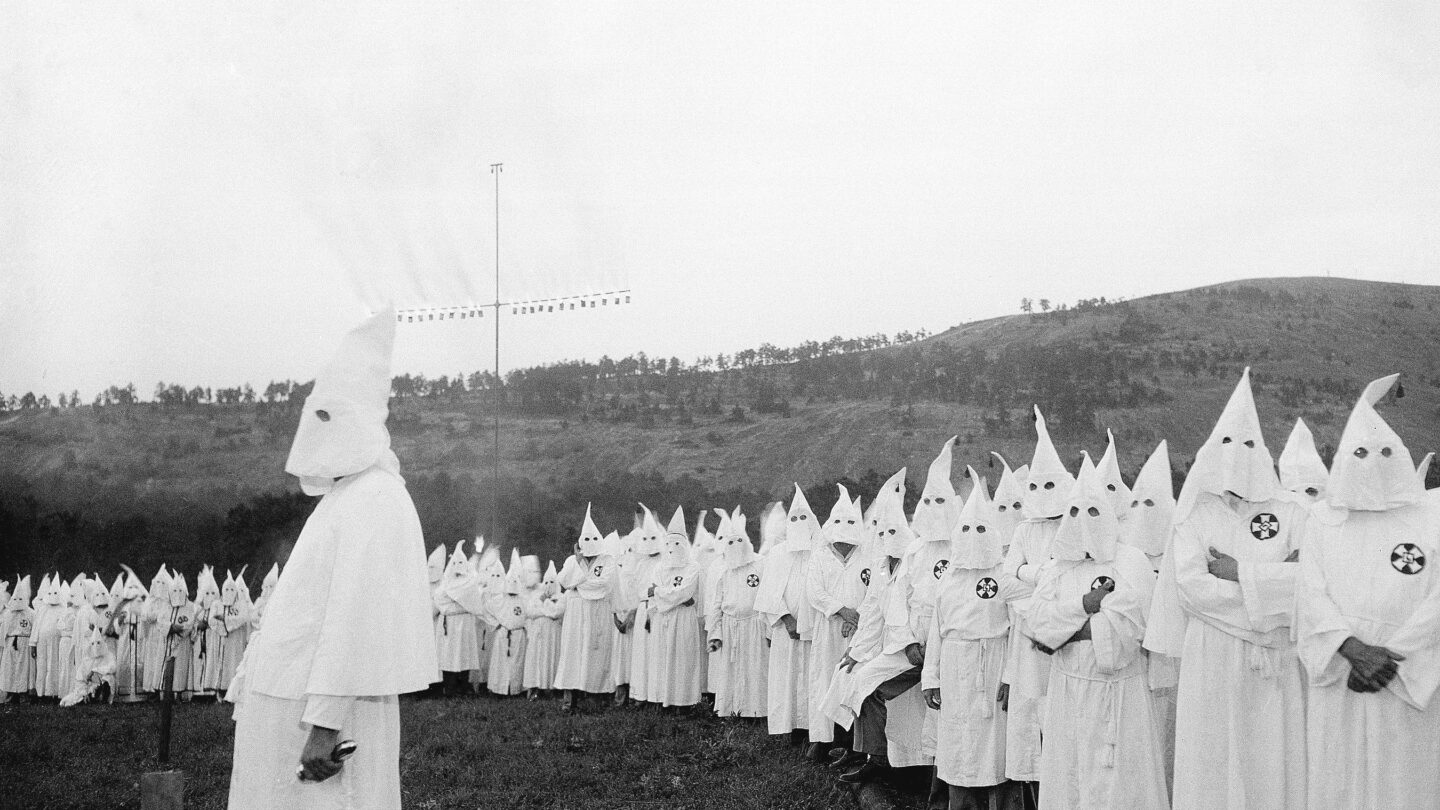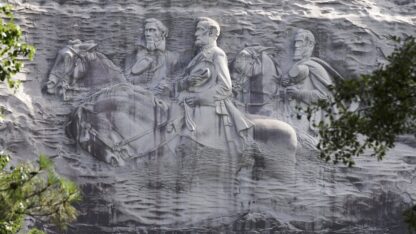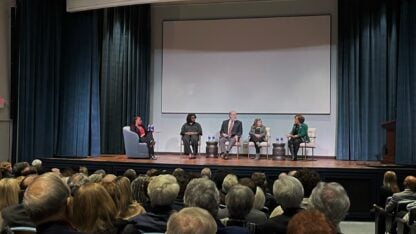Stone Mountain and the rebirth of the KKK, one century ago

In his iconic “I Have a Dream” speech, Martin Luther King Jr. lists places around the country, from California to Colorado, saying to “let freedom ring” from each location. Halfway through, to the cheers of the crowd, he includes “Stone Mountain of Georgia.”
As many in the audience would have understood, the inclusion came with a footnote. For much of the 20th century, Stone Mountain was the symbol of the Ku Klux Klan.
The organization, in its most insidious form, was reborn there one hundred years ago.
A Fiery Cross
From a side street in Stone Mountain village, you can see the rounded summit of the granite mountain. Today you can’t really make out what’s going on up top. But historian Paul Hudson, Georgia Perimeter College professor and co-author of “Atlanta’s Stone Mountain: A Multicultural History,” suspects it would have been noticeable when the Ku Klux Klan assembled there in 1915.
“It was Thanksgiving night and maybe people would come out,” said Hudson, “and if they were where we are now on this rise, they could probably see a burning, fiery cross.”
The burning fiery cross was lit by William Joseph Simmons, an Atlanta man who, Hudson says, was a failure before he came up with the idea to revive the Klan, a group that had disappeared decades before. Simmons planned the ceremony in strange detail:
“Simmons had a sword, civil war saber,” Hudson said. “There were various texts. There was the Constitution of the United States and the Declaration of Independence. And by the way, the order of the laws of the Ku Klux Klan.”
It was an all-American affair, or that’s how Simmons and his followers thought of it. They were inspired by a new film, “Birth of a Nation,” that depicted the first Klan as American saviors.
But that original group was a band of racist vigilantes who terrorized freed blacks and their supporters in the Reconstruction Era South. This new Klan turned into something very different.
A Mass Organization
“The Klan really becomes an organization, a mass organization for the only time in U.S. history,” said Grace Hale, a history professor at the University of Virginia. “And it is very much focused on white supremacy in the broadest sense.”
The Klan had returned with a new message. It was not just going to terrorize blacks. In fact, the men who hiked to the top of Stone Mountain would have had the lynching of a Cobb County Jewish man named Leo Frank fresh in their minds.
“It’s very much focused on attacking Jews and attacking Catholics and any people who are not Protestant Anglo-Saxons,” said Hale. “So they become really equal-opportunity haters and articulate a vision of America with themselves at the center.”
While today we might remember the Ku Klux Klan as a radical, terrorist group, this Klan grew to be part of mainstream culture. At its height, it had more than 4 million secret members nationwide, many in the North.
And according to University of Georgia professor James Cobb, they weren’t exactly from society’s bottom rung.
“It’s striking where rosters of Klan membership in the 20s have been uncovered,” said Cobb. “The rosters give you kind of a list of the bankers and merchants and lawyers in town.”
It was certainly the case in Atlanta, where leaders saw the Klan as a way to keep race relations stable, and thus make the city welcoming to new businesses.
By the 1920s, the Klan had a veneer of respectability. It didn’t promote lynch mobs — at least, not as its primary goal; it promoted morality, good citizenship, “Americanism.”
“Once it got to be enough of a fixture in communities, it became sort of like not being able to get into the country club,” said Cobb. “If you weren’t in the Klan, people sort of wondered if you were really on board with community improvement or protection of community values.”
The group’s new reputation was like putting lipstick on a pig, according to Cobb. But it worked partly because suspicions of groups like immigrants, Catholics and Jews were already there.
“The Klan people were very expert into tapping in both to the prejudices, the things that people didn’t like,” said Cobb, “as well as the races, the people, they were not disposed to like, but also their anxieties, what worried them.”
The Klan Today
This Klan eventually self-destructed in the late 1920s after high profile scandals involving theft and rape.
It would return a few times over the century, but the Klan would never infiltrate public life in the same way.
And today, with a mere 4,000 members, according to the Southern Poverty Law Center, it’s easy to forget it ever did.
According to historian Paul Hudson, it’s especially easy to forget that history when standing on the granite rock where the modern Klan began.
“I love Stone Mountain and it’s interpreted so well, the carving and the quarry exhibit and so many things,” Hudson said. “But there is this amnesia about the Ku Klux Klan, as if it never existed.”
Modern Atlanta seems to be fine with that. The Klan’s connection with Stone Mountain officially ended when the state of Georgia took over the park in 1958.








